CHAPTER 14
Erb's Palsy
Arm Paralysis from Birth Injury
WHAT IS IT?
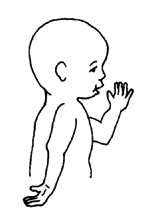
Erb's palsy is a paralysis of the muscles in a baby's arm, caused by injury of the nerves in the shoulder at birth (during delivery).
The baby lies with one arm and hand twisted backward and does not move the arm as much as the other.
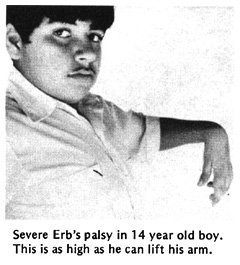
If the full range of motion of the arm is not kept through regular exercise, contractures will develop that may prevent lifting the arm above the shoulder or turning the hand palm up.
HOW COMMON IS IT?
Nerve damage causing Erb's palsy occurs in approximately 1 out of every 400 births. It is much more common in babies who are born butt first (breech) because the shoulder is easily stretched and the nerves injured.
WHAT CAN BE DONE ABOUT IT?
With the baby, start range-of-motion exercises 2 times a day.
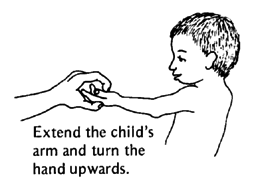
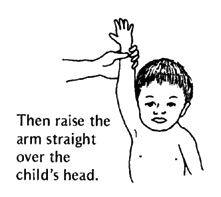
When the child is old enough, have him do exercises himself, for range of motion and to increase strength.

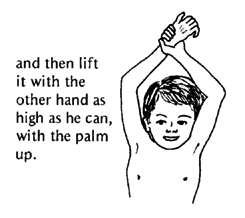
Note: If contractures have already formed, do exercises more often, for a longer time. Each time try to turn the hand up and lift the arm as high as possible. Hold it in the stretched position while you count to 25, or sing a song.
Other helpful exercises
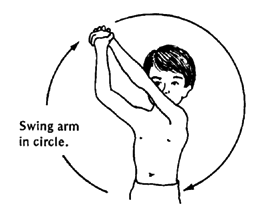
|
 |
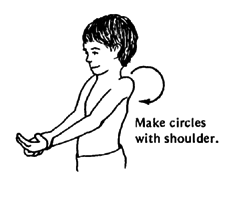
|

|
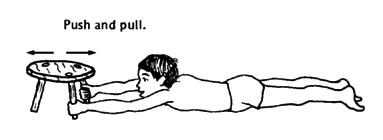
|
Look for ways to include these exercises in work and play.
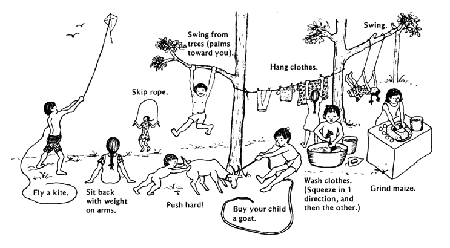
PREVENTION
Erb's palsy can sometimes be prevented if the midwife or doctor takes care not to strain or force the baby's shoulder when being born. Examination of the mother's belly before birth should let the midwife know if the baby is likely to be born breech. In this case a hospital delivery by a skilled doctor or midwife may reduce the chance of injury.
Contractures and significant disability from Erb's palsy can largely be prevented by exercises. Some weakness may last throughout life.


